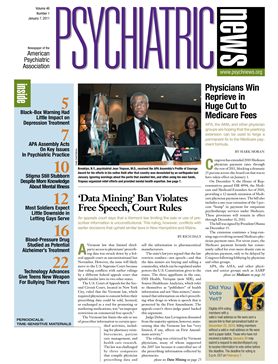Although mental illness appears to be a factor in about 90 percent of suicide cases in high-income countries, the rate seems to be substantially lower—70 percent—in China.
The findings are from a study published in the September-October 2010 General Hospital Psychiatry. It was led by Michael Phillips, M.D., a professor of psychiatry and global health at Emory University in Atlanta and director of the Suicide Research and Prevention Center at Jiao Tong University in Shanghai, China.
The study sample consisted of 239 consecutive suicide attempters treated in the emergency departments of four randomly selected general hospitals in Shenyang, a city in northeast China. To understand what compelled these individuals to attempt suicide, Phillips and his colleagues used the Structured Clinical Interview for DSM-IV (SCID), the Suicide Ideation Scale, the Hamilton Rating Scale for Depression, and a quality-of-life measure to evaluate sociodemographic and other characteristics of suicide attempters.
Seventy percent of subjects met diagnostic criteria for a current mental disorder, the researchers found. Sixty-three percent of these had mood disorders, 15 percent had anxiety disorders, 11 percent had psychotic disorders, and 4 percent had substance use disorders. The 30 percent of attempters without a DSM-IV Axis I mental disorder were generally younger, had higher levels of impulsiveness, and were more likely to have ideas about being rescued than were attempters with an Axis I mental disorder.
Thus, mental illness appears to play a smaller role in suicides in China than in high-income countries, whereas impulsivity appears to play a larger role in China, Phillips and his colleagues concluded.
What accounts for this difference among suicide attempters is unclear. But one thing is certain, Phillips told Psychiatric News—when Chinese suicide attempters have access to pesticides, the outcome can be deadly.
“In rural China the ready access to pesticides in a high proportion of homes is like having loaded guns on the kitchen tables of America,” Phillips said. “Fifty-eight percent of suicides in China entail the use of pesticides.
“The import [of these results] for China is that a substantial proportion of persons seen in emergency rooms [ERs] for suicide attempts do have treatable mental disorders. [Yet] in China, almost none of the individuals who get treated in ERs for suicide attempts get assessed for psychological problems. Few general hospitals have psychological services, and those that do do not provide psychological consultation to the ER. So the vast majority [of suicide attempters] are . . . sent either to the ward (if they used a pesticide and need monitoring) or home without any type of psychological evaluation.”
The findings also have relevance for American psychiatry, Phillips believes. “There may need to be a reconsideration of the theories that assume that mental illness is a prerequisite for suicide, as discussed in my editorial in the July 2010 American Journal of Psychiatry. Are religious fanatic suicide bombers, terminally ill people who want to end it all, and impulsive individuals who can't think at the moment of a better way to deal with their acute distress all mentally ill?”
The study was funded by the China Medical Board of New York.
An abstract of “Comparison of Patients With and Without Mental Disorders Treated for Suicide Attempts in the Emergency Departments of Four General Hospitals in Shenyang, China” can be accessed at <www.sciencedirect.com> under “Browse by Title” by clicking on “G” and then “General Hospital Psychiatry.” 
